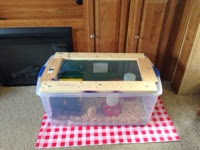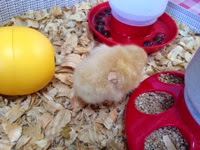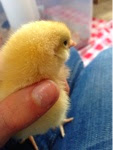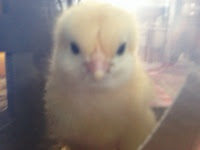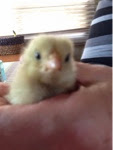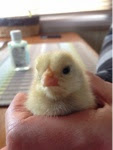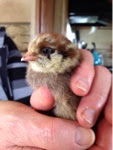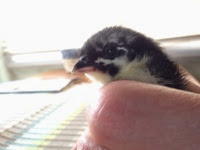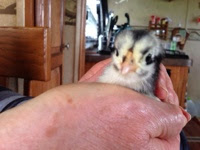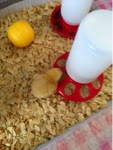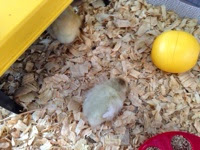Saturday, May 17, 2014
New Chicks
Thursday, May 1, 2014
Bunny Grooming

NO!!! Never wash a rabbit unless it is very dirty or has soiled itself. Rabbits can go into shock when you immerse them in water. Rabbits do a very good job of keeping themselves clean and only need help when they are very sick. If you have to wash your rabbit, fill a bath/tub with about an inch of water. Put a towel in the bottom of the bath so the bunny has some grip. Use some gentle shampoo or soap in the water. Try and hold the front half of the bunny out of the water. This may stop her struggling. Gently massage the hind leg/tail area with your fingers and remove any poops. Tip the water out and then replace it with clean water to rinse the bunny. Use towels and paper towels to dry as best you can, then use a hairdryer to direct warm air in the general vicinity of the rabbit. Do not point the hairdryer at the rabbit as you may burn the skin. Generally rabbits will try and lick themselves dry. Don't be surprised if your rabbit sulks for a while afterwards !!!

Guinea Pigs + Other Pets??
If you have other pets aside from your cavies, it’s nice to see one another in harmony. But are there ways to introduce your cavies to your other, bigger pets? Isn’t it dangerous for a small guinea pig to go near a dog or a cat for example? The truth to the matter is that you can introduce your guinea pigs to your other pets provided you follow systematized ways of introducing the animals. And you avoid some situations that you know you can’t get your guinea pig if the situations head south.
The DON’Ts
Before you set your dreams high about introducing your cavies to your other pets, know that there are situations which prevent you from fulfilling your dream. Don’t push it if
1. Your other pet is aggressive
Pets that are known to have aggressive tendencies such as a pit bull or a territorial rabbit should never come close to your guinea pigs. Or is it the dog who needs to watch out for the cavy?
2. Your other pet is a known mouser
Some cats are known mousers that they’ll let no one, including you, stand on their way to catch a rodent. You can’t give your guinea pig help once your mouser swings into action, so it’s better to separate the animals.
3. Your other pet is too large
No matter how gentle your other pet is, if it’s too large for a small cavy to handle, then they should never be introduced. Examples of such gentle giants are a St. Bernard and a Labrador. One unintentional thump from these animals can render your cavy unconscious.
Draw a Plan
Like setting up people for a blind date, you need to draw a plan to introduce your cavies to your other pet. For example, you need to ensure you can get your guinea pig help in case the animals stepped on each other on the wrong foot. That may mean setting up the date when there are other people in the house. You also need to plan about restraints, barricade (putting your cavy in its cage will do), , toys, etc.
Execute the Plan
Before you execute your plan, know that you can’t rush things. You need to be patient about introducing your guinea pig to your other pet as it may take some time before you can see them warming up with each other. Here’s what you can do:
1. Introduce the animals with your cavy in its cage.
When introducing your cavy to your other pet for the first time, don’t take your cavy out of its cage. The cage should give your piggy space in case the other animal get a little too close for your cavy’s comfort. Place the cage with your cavy in it on the floor and let your other pet introduce itself to your cavy. Do this frequently until the animals are acquainted with each other.
2. Introduce the animals without the cage.
Once you’re confident that your cavy and your other pet are used to their sights and sounds, you can introduce them in person without the cage. Ask someone to give your guinea pig comfort and protection by holding it on his or her lap while you let your other pet sniff the cavy up close and personal, paws, furs, and all. But, always keep the restraints ready in case your other pet gets too excited and frightens your cavy.
3. Put them in the same room without restraints or cage.
Once you see your pets can handle each other without restraints or barricade, you can put them in the same room together. However, don’t leave them alone in the same room no matter how acquainted and friendly they are with each other. You can’t predict your pets’ mood; it’s better to be safe than sorry.
The key to introducing your guinea pig to your other pets is patience. Be patient about the process and give your pets enough time to warm up with each other before giving up.



